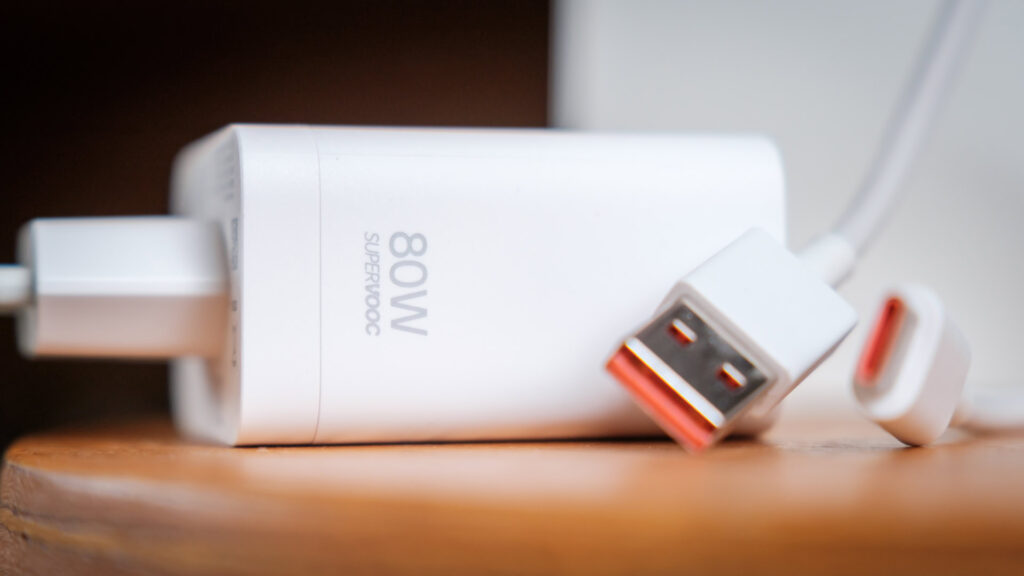Robert Triggs / Android Authority
Another week, another problem with USB-C charging. Perhaps I’m just having a worse time than most, undoubtedly due to the sheer number of gadgets on my desk at any given time, but plugging in my new OPPO Find X9 Pro had me pulling my hair out.
It’s been a while since I’ve actually struggled to get a modern flagship to start fast charging. Like any normal person, I took my new Find X9 Pro out of the box and tried plugging it into my existing charger setup. That went OK, if not a little slow (more on that later). But I also wanted to compare my desk charger against an official 80W OPPO SuperVOOC plug, so I gave that a try as well. The phone wouldn’t charge at a rate above 22W-27W — far short of its claimed 80W charging potential.
Do you still use proprietary fast charging?
32 votes
Yes, all the time.
38%
Some of my chargers do.
25%
Never.
38%
I also tried a backup 80W SuperVOOC plug, as well as a couple of USB-C to USB-A cables I had on hand, including two that are rated for 6A or higher. No dice. Fiddling with OPPO’s Smart Rapid Charging feature made absolutely no difference to the peak power either.
After all that testing, the answer was anticlimactic: the bundled USB-A to USB-C cable was the only one that worked. Worse, it still displays the same “ultra-fast charging” banner, regardless of whether the phone is charging at 80W or 25W, leaving most people unaware that they’re charging slower than they should be.
Going back a step, OPPO’s Smart Rapid Charging setting technically warns you that a “genuine power adapter and cable” are required for fast charging. However, that toggle didn’t seem to make any difference to peak power when turning it on and off. Furthermore, this text is hidden deep within the settings menu, so few will ever be aware that their cable might be a bottleneck.
Case in point: I mixed up the official OPPO cable with two others during my testing process. There is no meaningful way to tell them apart, except that the cable that seems to work has white connector interiors (compared to the other cables, which are orange and black). See the image below.
Robert Triggs / Android Authority
So here I am, messing around in settings menus and cables to get a phone to charge quickly. That wasn’t a good user experience in 2020, and it’s inexcusable in 2025.
It’s not as if the whole industry is clueless. I still think HONOR’s “would you like to super-fast charge” notification is the way to go — offering us a prompt that faster charging is available and whether we’d like to use it (possible at the expense of long-term battery health) provides the best of both worlds. But even so, this shouldn’t be exclusive to proprietary charging standards; the same option could be provided when connecting to USB Power Delivery chargers with different capabilities.
But the real kicker: you don’t actually need proprietary tech to get genuinely fast charging anymore. Last year’s Xiaomi 15 Ultra supported 60W charging over USB PD PPS, while the Xiaomi 17 Ultra now supports 100W charging using the same power bricks that can be used for laptops and tablets. Handy.
When comparing real charging behavior, rather than just peak numbers, the gap becomes even smaller. The OPPO Find X9 Pro might support 70W via SuperVOOC, but it actually spends most of its time at a more modest 28W, resulting in a charge time of 68 minutes. When charging via USB PD PPS, the average power is approximately 27W, resulting in a full charge time of 71 minutes — essentially the exact time to full.
USB PD with any cable is faster than proprietary charging with the wrong cable. That’s dumb.
The direction of travel is obvious: USB-PD PPS, AVS, and even UFCS support in China are now virtually universal, while proprietary systems are offering less and less in return. However, companies continue to adhere to their own standards for branding and ecosystem control, not because the technology provides meaningful benefits to users anymore.
The payoff just isn’t there. A few minutes shaved off a full charge isn’t worth the cable confusion, buried toggles, and accessory incompatibility. It’s time to call it: proprietary charging has outlived its usefulness.
Don’t want to miss the best from Android Authority?
Thank you for being part of our community. Read our Comment Policy before posting.

